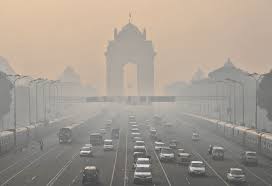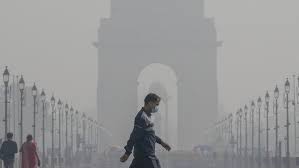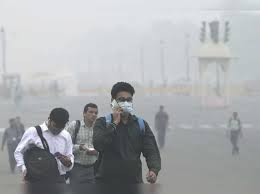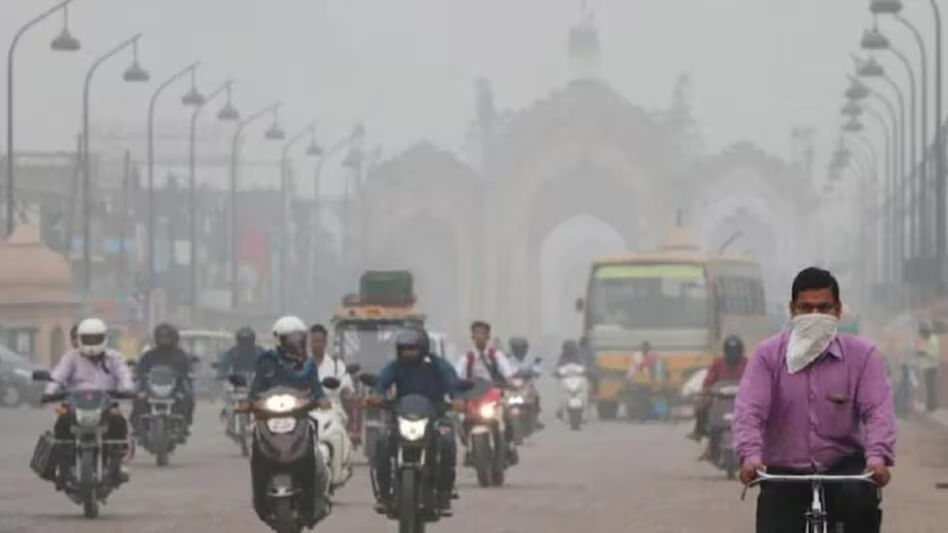The national capital and surrounding regions woke up to a blanket of dense Delhi Fog on Thursday morning, leading to near-zero visibility and severe disruptions in transportation. The India Meteorological Department (IMD) reported that visibility levels dropped to as low as 50 meters in several parts of Delhi Fog, causing significant delays in flight operations, train schedules, and road traffic. The worsening air quality further compounded the situation, raising concerns among residents and authorities.

Table of Contents
Delhi Fog Disrupts Air and Rail Travel
The dense fog had a cascading impact on air travel at Indira Gandhi International Airport, where multiple flights were delayed, diverted, or canceled due to extremely poor visibility. Airlines issued advisories urging passengers to check their flight status before heading to the airport. Several international and domestic flights reported delays of up to two hours, with some being rerouted to nearby airports in Jaipur and Lucknow.
A senior airport official stated, “Visibility was extremely low this morning, making it challenging for aircraft to land or take off. Despite the advanced CAT III-B instrument landing system, which allows operations in low-visibility conditions, delays were inevitable due to safety concerns.”
Rail travel was similarly affected, with over 20 trains running behind schedule, including Rajdhani, Shatabdi, and other long-distance services. Passengers at New Delhi Fog Railway Station, Old Delhi Railway Station, and Hazrat Nizamuddin Railway Station faced extended wait times, with many expressing frustration over the lack of timely updates on train schedules.
Traffic Chaos as Roads Shrouded in Thick Mist
Vehicular movement on Delhi Fog came to a near standstill in several areas as drivers struggled with extremely poor visibility. Major highways, including the Delhi-Gurugram Expressway, Delhi-Noida Expressway, and Outer Ring Road, witnessed slow-moving traffic and multiple minor accidents. The Delhi Fog in Traffic Police issued advisories urging commuters to drive cautiously, use fog lights, and maintain safe distances between vehicles.
A traffic official reported, “Several incidents of collisions were reported early in the morning due to the fog. We have deployed additional personnel to manage traffic flow and ensure that there are no major bottlenecks.”
Motorists, especially those on two-wheelers, found it particularly difficult to navigate. Many riders resorted to using hazard lights and honking continuously to alert other vehicles of their presence. The low visibility also led to temporary road closures in certain high-risk zones prone to accidents.

IMD’s Warning and Weather Forecast
The IMD attributed the dense fog to a combination of moisture-laden winds, temperature inversion, and calm surface winds preventing the dispersion of pollutants. Officials warned that similar conditions are expected to persist for the next couple of days, with only a slight improvement anticipated after February 3, when a fresh Western Disturbance is likely to bring light rain.
According to the IMD, “The current weather pattern indicates that dense fog will continue to affect northern India, including Delhi Fog -NCR, Punjab, Haryana, and Uttar Pradesh, over the next 48 hours. The situation is expected to improve slightly by the weekend as wind patterns change.”
The minimum temperature in Delhi was recorded at 11.2 degrees Celsius, while the maximum hovered around 19 degrees Celsius, making the cold and foggy conditions even more challenging for commuters and daily wage workers.
Impact on Air Quality: ‘Very Poor’ Conditions Persist
The thick fog also exacerbated Delhi Fog already deteriorating air quality. The Air Quality Index (AQI) remained in the ‘very poor’ category, with PM2.5 and PM10 levels soaring beyond safe limits. At 7:00 AM, the AQI stood at 350, according to data from the Central Pollution Control Board (CPCB).
Environmental experts warned that the fog was trapping pollutants close to the ground, making breathing conditions hazardous, especially for the elderly, children, and those with respiratory illnesses. Residents were advised to minimize outdoor activities, wear masks, and use air purifiers indoors to reduce exposure to toxic air.
A senior environmentalist commented, “The lack of strong winds and high moisture content in the air is preventing pollutants from dispersing, worsening the smog situation. While short-term measures like artificial rain and emergency pollution control interventions can help, long-term strategies are needed to curb emissions and industrial pollution.”

Government and Civic Response on Delhi Fog
Authorities have ramped up measures to mitigate the impact of the dense fog and worsening air quality. The Delhi Fog government issued directives to ensure strict enforcement of traffic regulations and activated fog shelters at major bus terminals and railway stations for stranded commuters.
In a statement, the Delhi Fog Transport Minister said, “We are coordinating with all departments to ensure smooth public transport operations despite the fog. Additional buses have been deployed, and metro services have been increased in frequency to help commuters.”
Traffic police have set up additional checkpoints and are using digital signage to alert drivers about low visibility zones. Metro rail services in Delhi continued to operate smoothly, providing some relief to commuters who opted for public transport over private vehicles.

Commuters Express Frustration
The dense fog created significant hurdles for office-goers and students who struggled to reach their destinations on time. Many reported delays of up to an hour due to slow-moving traffic, while others took to social media to vent their frustration over the transportation chaos.
Ravi Malhotra, a commuter from Noida traveling to his workplace in Connaught Place, said, “It took me almost two hours to reach my office today. The roads were packed with vehicles moving at a snail’s pace, and I could barely see beyond a few meters. This kind of weather makes commuting a nightmare.”
Similar sentiments were echoed by daily wage laborers and roadside vendors, whose livelihoods were affected by the reduced footfall in markets and public areas. Many were seen huddled around bonfires, trying to keep warm in the chilly weather.
Precautionary Measures for Residents
Given the ongoing foggy conditions, authorities and experts have advised residents to take necessary precautions:
- Drivers: Use fog lights, drive slowly, and avoid sudden lane changes to prevent accidents.
- Pedestrians: Wear reflective clothing when walking near roads to increase visibility.
- Health Precautions: People with respiratory conditions should wear masks and avoid prolonged exposure to the outdoors.
- Stay Updated: Follow weather advisories and traffic updates before stepping out.
Conclusion
The dense fog in Delhi has once again highlighted the challenges posed by extreme winter weather combined with air pollution. With significant disruptions to air, rail, and road traffic, as well as worsening air quality, residents are advised to remain vigilant and take necessary precautions. Authorities are working to manage the situation, but improving long-term air quality and urban infrastructure will be key in mitigating the impact of such weather phenomena in the future.
